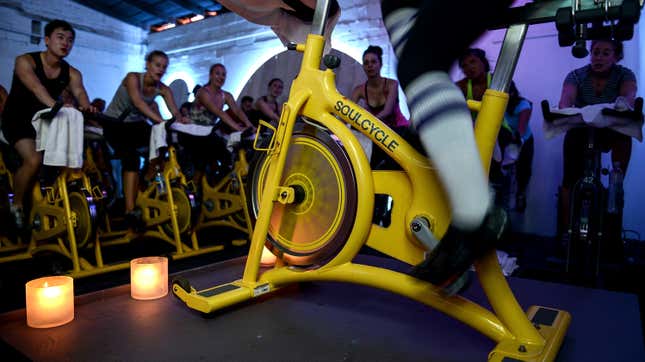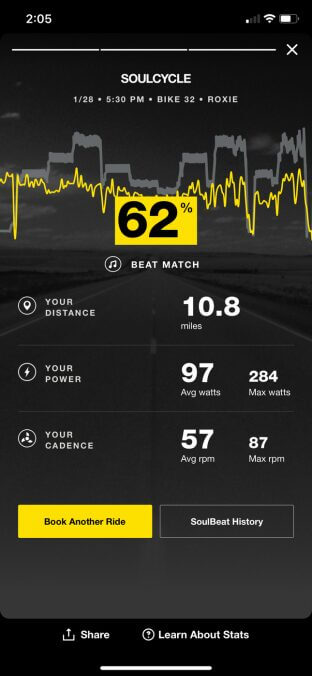SoulCycle Now Sends Data To Your Phone and I Hate It
Latest

Change is hard and not always for the better. This week, after a months-long hiatus from SoulCycle, I got back on a bike and was greeted with an entirely different system of exercising. The first harbinger of doom was a new set of knobs for seat adjustment. They were smooth and rounded—emblazoned with the SoulCycle logo. The familiar yellow tone lulled me into a false sense of security, which is why I didn’t question why the front of the bike had grown bigger (apparently it’s to hide an electrical panel). It wasn’t until the ride was over that the true evil fully emerged: SoulCycle was quantifying my workout.
This new method, available in all New York studios, is called SoulBeat. A few minutes after a ride is completed, the rider’s metrics are available on the SoulCycle app to taunt them with a variety of stats, including the amount of time they spent offbeat. SoulBeat also shares distance, power, and cadence — information that is immediately available in other cycling studios, like FlyWheel or Peloton, which use output to motivate riders.
-

-

-

-

-

-

-

-

-

-

-

-

-

-

-

-

-

-

-

-

-

-

-

-

-

-

-

-

-

-

-

-

-

-

-

-

-

-

-

-









































